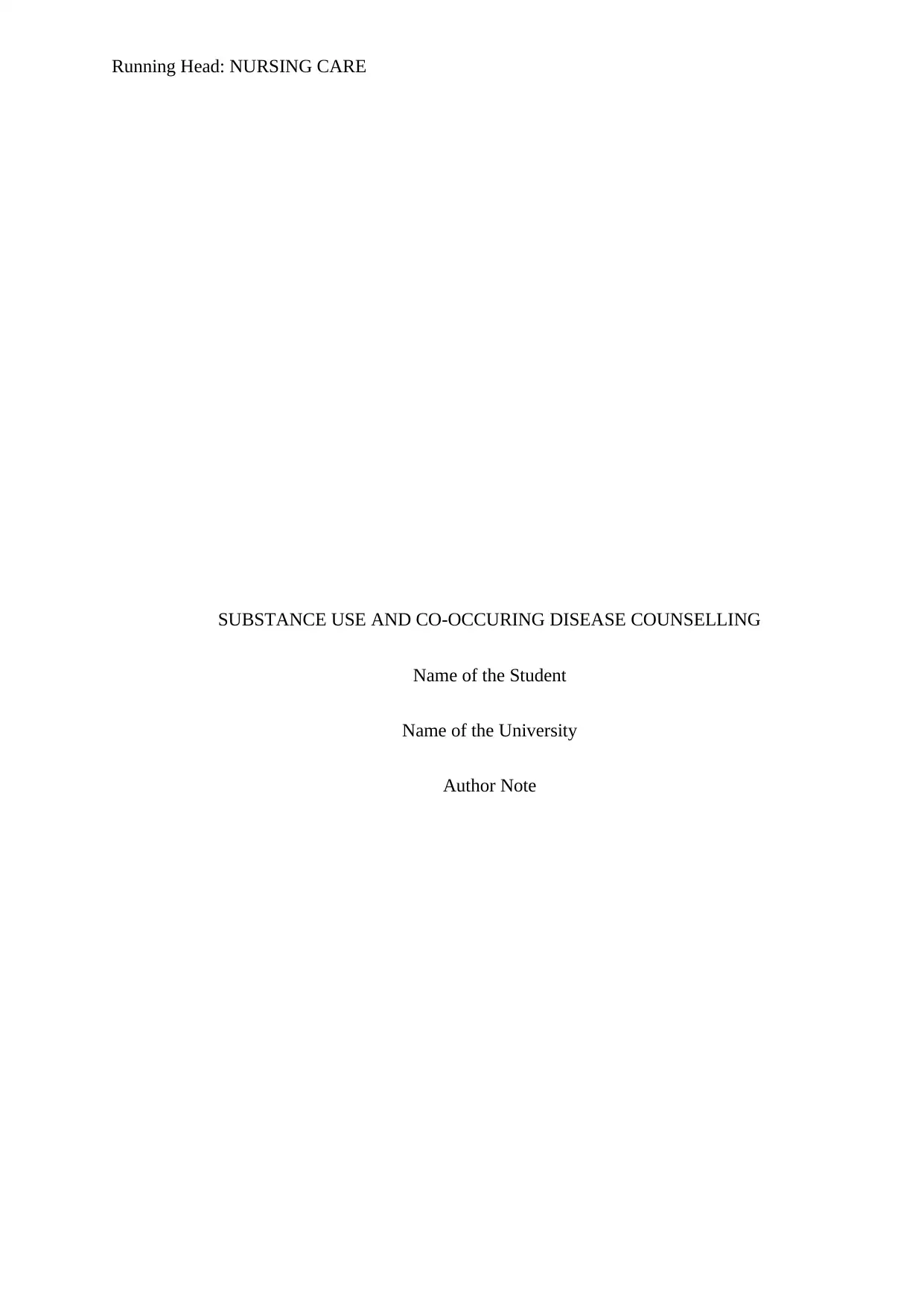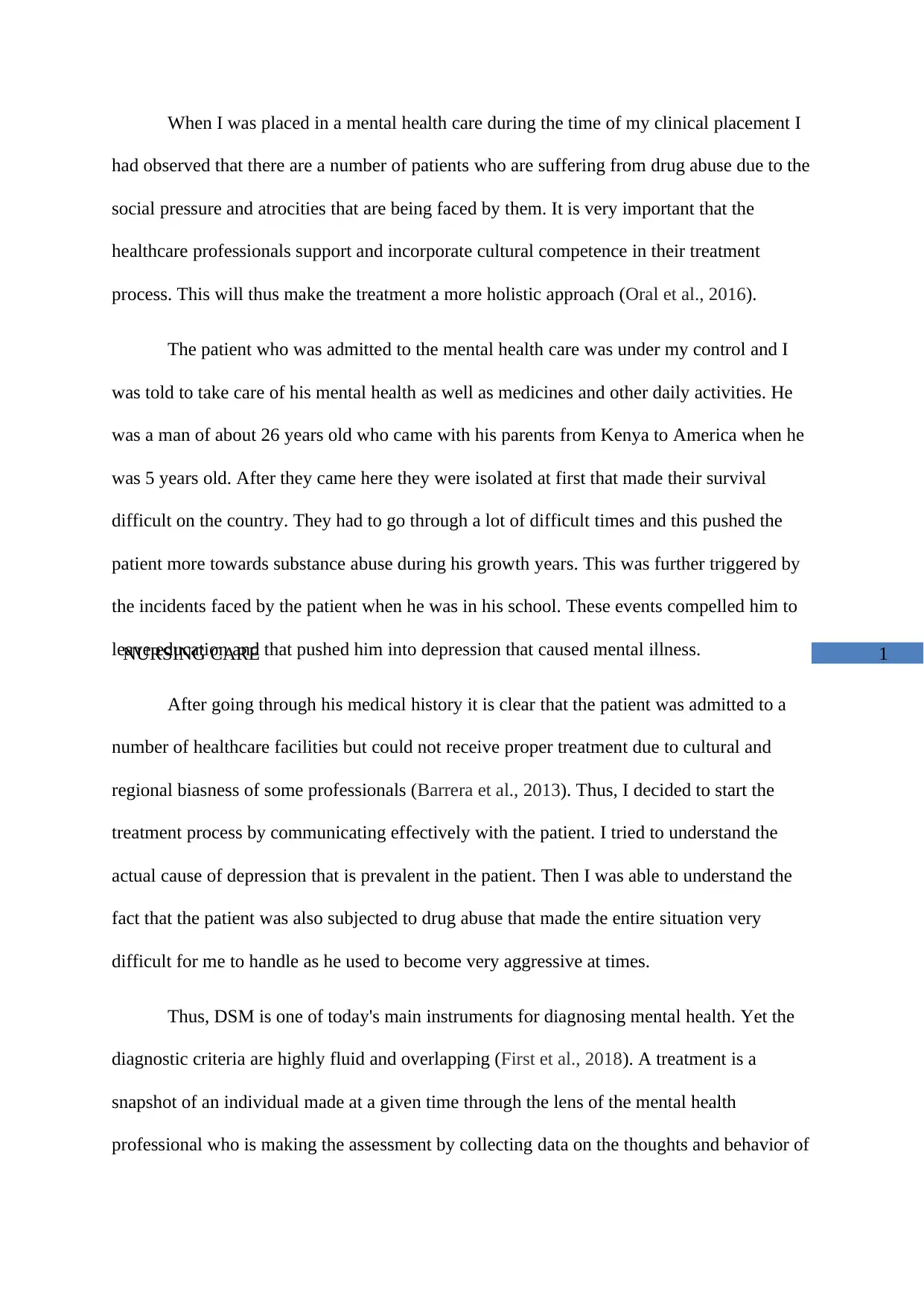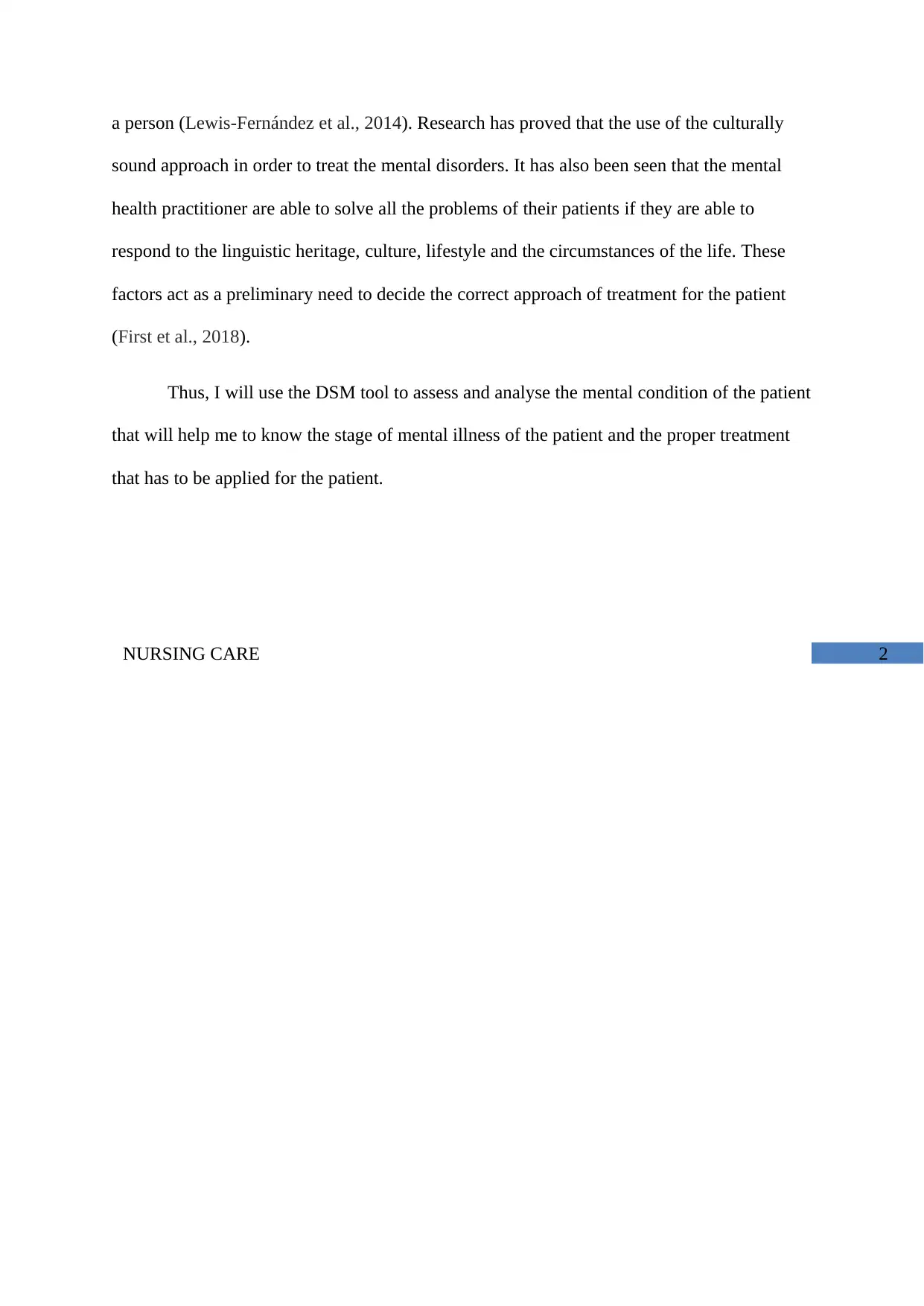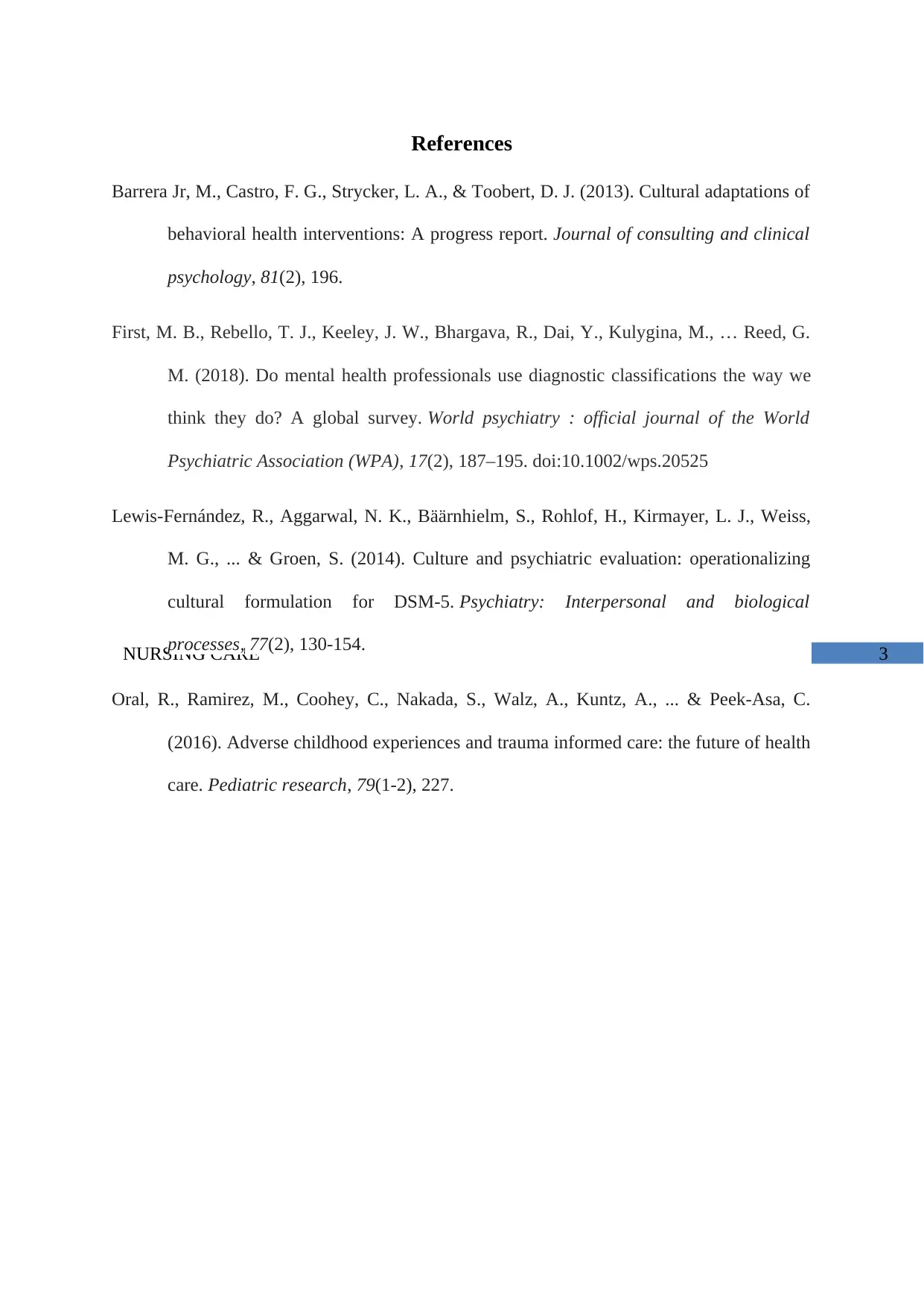NURSING CARE: Reflection on DSM Diagnosis and Treatment Planning
VerifiedAdded on 2022/10/13
|4
|811
|41
Report
AI Summary
This report reflects on the application of the DSM in diagnosing and treating mental health issues, particularly concerning substance use and co-occurring disorders. The student observed a case during a clinical placement, highlighting the importance of cultural competence in healthcare, especially when treating patients from diverse backgrounds facing social pressures and traumas. The report emphasizes the fluid nature of diagnostic criteria and the need for a holistic approach, considering linguistic heritage, lifestyle, and life circumstances. The student used the DSM to assess a patient's mental condition, addressing substance abuse and aggression while acknowledging the potential for bias in treatment. The report references key literature and stresses the importance of effective communication and understanding the root causes of mental health issues to provide appropriate care.
1 out of 4











![[object Object]](/_next/static/media/star-bottom.7253800d.svg)